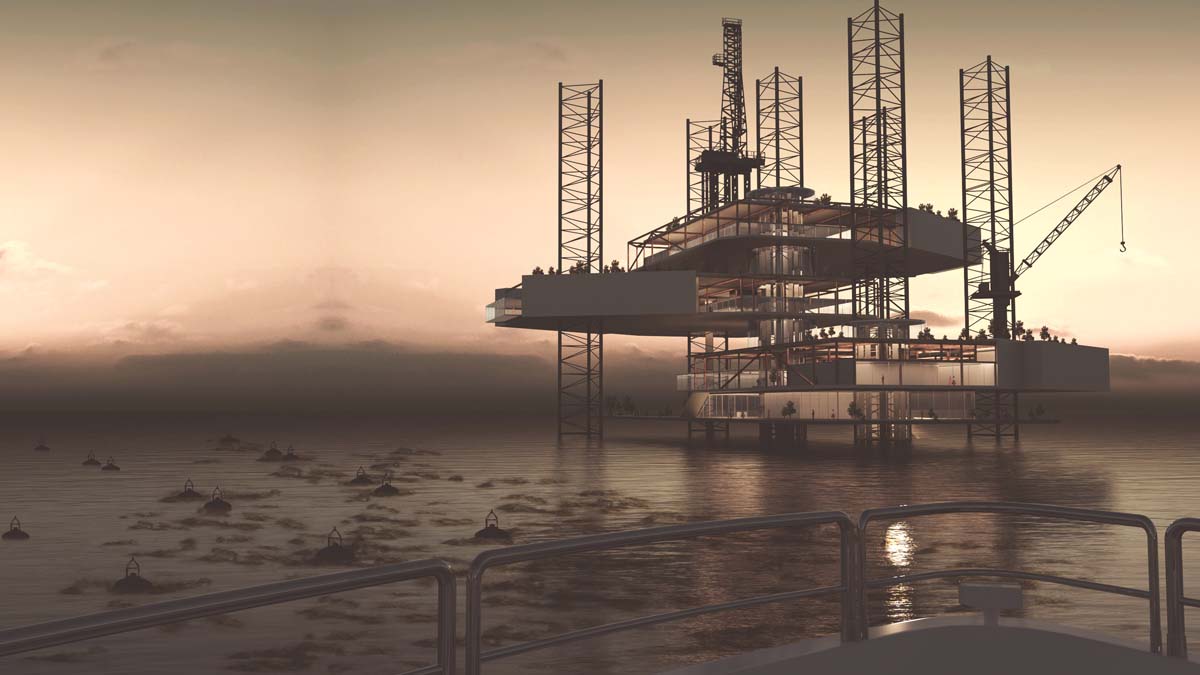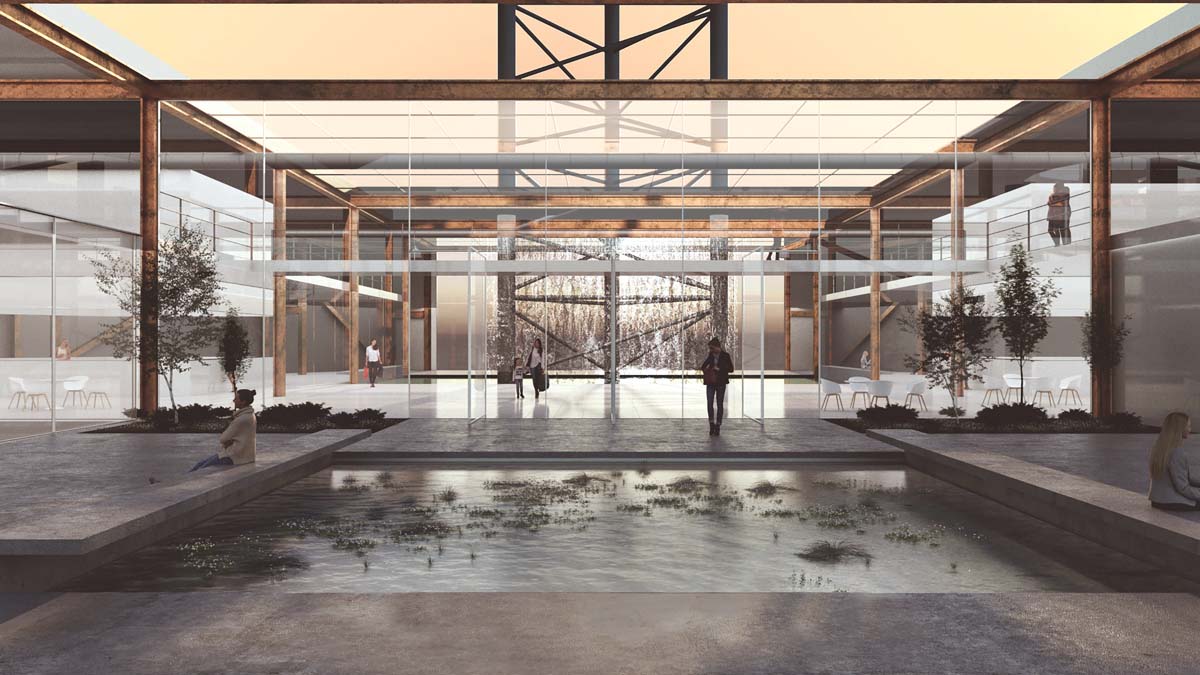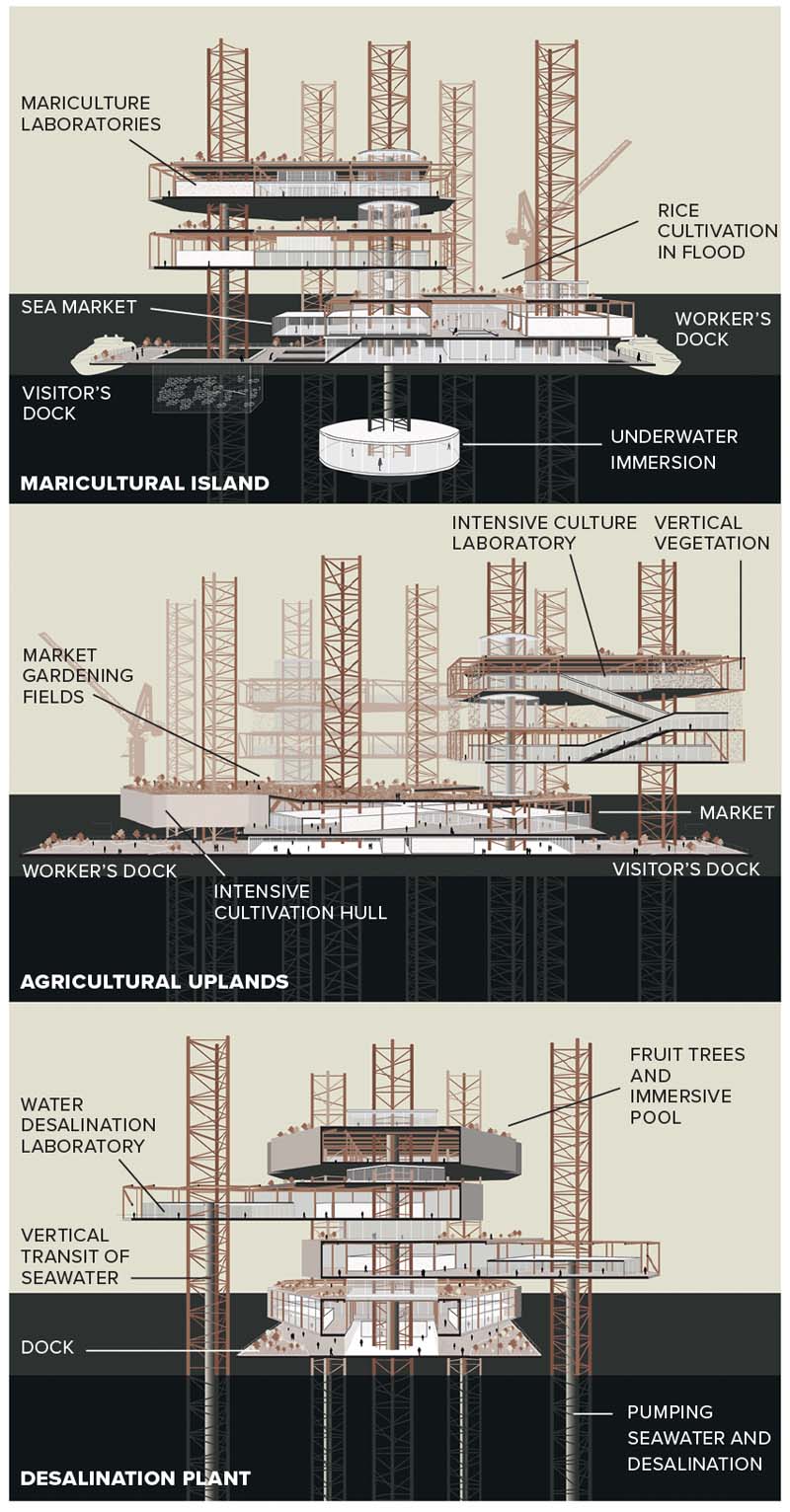Mechanical Landscape
Tyana Laroche, Université Laval
WINNER OF A 2021 CANADIAN ARCHITECT STUDENT AWARD OF EXCELLENCE
This project offers a reflection on the reuse of abandoned offshore oil rigs, as well as an architectural solution that is well developed at different scales of experience. The duality between the industrial and natural landscapes—as well as the potential of a repeated typology for the rehabilitation of this type of infrastructure—are topics that are especially pertinent to our present times as we abandon fossil fuels and leave the infrastructure of extraction behind. -Jury Comment

First fact: hundreds of the approximately 1,862 oil platforms in the Gulf of Mexico have been abandoned. Second fact: Between 1932 and 2020, Louisiana lost 5,000 km2 of coastal agricultural land. Idea: Relocate and consolidate some of the abandoned platforms off the Louisiana coast and repurpose them as food production hubs and experiential islands in a place where previously cultivated land has eroded into the sea.
The Mechanical Landscape thesis envisions the transformation of structures designed to extract the natural resource of oil into islands that simultaneously produce a wide range of crops and stimulate the economy by providing a series of new day-trip visitors’ destinations. Floating platforms are moved, anchored, and in some cases stacked; in others, juxtaposing multiple hulls creates larger surface areas. Three ‘islands’ are established in proximity: one for mariculture and one for agriculture, with a desalination plant situated between them and serving both of them.

The Maricultural Island’s farming operations include an algae development basin, rice cultivation, and a fish hatchery, with a chute for releasing mature fish into the sea. On a lower level, tourists can buy fresh ocean produce in a market and visit a diving pool before reboarding the vessel that ferried them to this destination.

Agricultural Uplands, the second island, has two plateau-like levels, with programming areas for intensive culture as well as a seasonal market, kitchen and food processing area on the lower and passive market gardening on the deck above. Laboratories are concentrated on smaller platforms elevated above and offset from the market gardening fields.
The third island, the Desalination Plant, offers visitors an opportunity to do more than gawk at labs and machinery: its top deck houses fruit tree gardens and an open-air swimming pool with expansive views.
 In her thesis, Tyana Laroche describes abandoned oil platforms as “marine carcasses” and resists the idea that these megastructures deserve the “revalorization” of being allowed to deteriorate into offshore industrial ruins. Far better to repurpose them as more positive models of production, consumerism, and distribution—without enlisting design to obscure their environmentally problematic past lives. Mechanical Landscape, she writes, is “a condensation of layers in constant relation to one another, formalizing a balance between life, death and the rebirth of a neglected structure.”
In her thesis, Tyana Laroche describes abandoned oil platforms as “marine carcasses” and resists the idea that these megastructures deserve the “revalorization” of being allowed to deteriorate into offshore industrial ruins. Far better to repurpose them as more positive models of production, consumerism, and distribution—without enlisting design to obscure their environmentally problematic past lives. Mechanical Landscape, she writes, is “a condensation of layers in constant relation to one another, formalizing a balance between life, death and the rebirth of a neglected structure.”
Location: Gulf of Mexico
Advisor: Jean Verville
